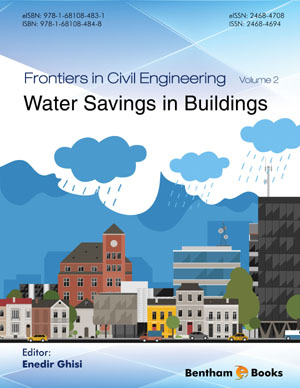Abstract
This chapter presents an approach for using multi-criteria decision analysis (MCDA) to study the tradeoffs of rainwater harvesting (RWH) system designs. Three scenarios have been designed and evaluated. Each one captures rainwater from the rooftops of the connected Civil and Materials Engineering (CME) and Hedco buildings on the University of Utah campus. Scenario 1 utilizes two separate storage cisterns; one large underground, and one smaller placed on the top of the CME building. Scenario 2 utilizes only one large underground cistern. It uses a pressure-regulated pump to supply a constant flow of water to each toilet in the building. Scenario 3 utilizes only one large cistern placed on top of the CME building. The design includes a pump to convey collected runoff from the Hedco building to the rooftop cistern. From there, toilets are flushed from the gravity-fed water. MCDA was used to integrate environmental impacts, cost, water use and social impacts of the proposed scenarios. GaBi software was used for environmental impact analysis; TRACI and ReCiPe were used as assessment tools. After assessment of the designs, it is suggested that Scenario 3 represents the most favorable option for any change to the toilet-flushing system in the CME.
Keywords: Concrete cistern, Environmental impacts, Economics, Fiberglass, GaBi, Global Warming Potential, Irrigation, Multi-criteria, Rainwater harvesting, Social impacts, Toilet flush.

















